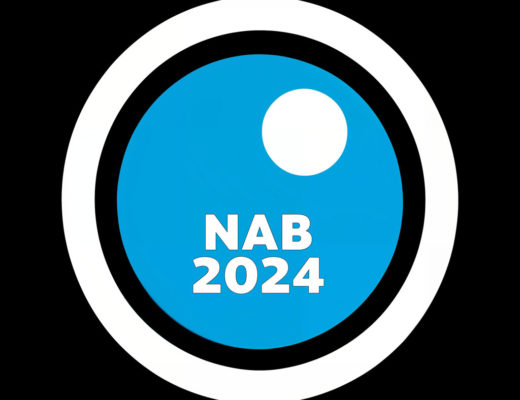The majority of ECM deployments are little more than point solutions that deliver limited corporate benefit. Despite huge investment in ECM technologies such as document management and web content management, few organisations are realising quantifiable benefit. How many organisations truly maximise content use across the business? Conversely, how many documents are written from scratch when they could have been drafted from a pre-existing document?
 The majority of ECM deployments are little more than point solutions that deliver limited corporate benefit. Despite huge investment in ECM technologies such as document management and web content management, few organisations are realising quantifiable benefit. How many organisations truly maximise content use across the business? Conversely, how many documents are written from scratch when they could have been drafted from a pre-existing document? How much time and how many opportunities are wasted as staff are forced to spend their time writing proposals, presentations and reports ‘long-hand’ instead of working smarter, from existing material freeing up time to spend on their core role? Now, deep within a recession, working to maximum capacity has never been more crucial as businesses fight to keep profits on the up. The savings, and indeed the profits, that can be gained from true ECM are tremendous, but they can only be achieved if an organisation understands both the true potential of ECM and the methodology required to realise the vision, insists Ben Richmond, founder and CEO, The Content Group.
The majority of ECM deployments are little more than point solutions that deliver limited corporate benefit. Despite huge investment in ECM technologies such as document management and web content management, few organisations are realising quantifiable benefit. How many organisations truly maximise content use across the business? Conversely, how many documents are written from scratch when they could have been drafted from a pre-existing document? How much time and how many opportunities are wasted as staff are forced to spend their time writing proposals, presentations and reports ‘long-hand’ instead of working smarter, from existing material freeing up time to spend on their core role? Now, deep within a recession, working to maximum capacity has never been more crucial as businesses fight to keep profits on the up. The savings, and indeed the profits, that can be gained from true ECM are tremendous, but they can only be achieved if an organisation understands both the true potential of ECM and the methodology required to realise the vision, insists Ben Richmond, founder and CEO, The Content Group.
Global Misperception
In its truest sense, ECM is still scantily used today. Instead, most organisations have, at best, a mismatched group of point solutions delivering one or more content management functions from document management to web content management, business process management, collaboration or scanning.
Furthermore, these technologies have typically been tactically deployed at departmental level to address specific areas of business pain. As a result whilst as an example, finance may have streamlined invoice processing, neither the information nor the document management technology is available to the rest of the business.
Yet these organisations believe they are doing ECM. In reality, whilst some are certainly beginning to address the issues created by the proliferation of unstructured information there is no ‘enterprise’ element to the deployment at all.
Without the enterprise approach to managing content, organisations are fundamentally missing the point of ECM. A point by point deployment of document management is not ECM; nor is the adoption of scanning technology. Unless organisations improve their understanding of ECM and its potential business implications they will not achieve a true ECM deployment – or realise the very considerable benefits.
Avoiding Wastage
True ECM requires organisations to consider content from a holistic viewpoint. It is about the effective use of content; sharing or re-using material to meet diverse operational requirements. Today’s disparate approach to deployment fails to maximise content value and does little to repurpose corporate wastage in both staff time and resource. It is so ironic that this negative result is the direct opposite of the exceptional time and resource saving to be gained from proper ECM.
Sales teams, for example, are still creating proposals from scratch despite the availability of relevant information elsewhere in the business. The finance department has no access to that proposal to streamline contract creation when the client engages; nor will the customer facing delivery team have access to information that would fast track the new business relationship.
Under a true ECM strategy all of those content elements are joined to ensure highly effective and efficient document management to support and bridge all areas of the business. From the finance department pulling paragraphs from the proposal to add into the contract to the marketing team using information in correspondence to support a new campaign, with the right ECM architecture, information can be used and reused appropriately and continuously as part of every job function.
Critically, there is none of the wasteful duplication of information or effort that occurs when individuals create documents in different formats and contexts to support information needs. With this, organisations can reduce wastage of both time and resources.
Furthermore, with a true ECM, information inaccuracy can be eliminated. Ensuring the lessons learnt from both well-run and failed projects are documented and shared will minimise the risk of further poor performance and wastage of company revenue.
Enterprise Approach
Organisations can only achieve truly effective ECM if they know how to approach it. And, essentially, the approach must not be technology-led. Good ECM design is complex. It requires an in-depth understanding not only of corporate content but how an organisation could use that content more effectively to drive out wastage.
ECM requirements differ between organisations, both in terms of how the content should be used for best effect and the level of ECM maturity. Organisations need to achieve an inherent understanding and a clear strategy about information requirements across the enterprise. It is a combination of good strategy, design, policy, know-how and capability that determines the success of an ECM deployment: only once the strategy is understood and defined should the organisation begin to consider the enabling technologies.
Unfortunately, any organisation that takes a technology first approach to ECM will be destined to fundamentally constrain potential benefits as vendors design the implementation to match the available product. And without the right strategy up front, all the ECM technologies in the world will not deliver true, effective, enterprise-wide use of content. It doesn’t matter if the technology comes from one vendor or twenty; without the underpinning strategy the result will not be true ECM.
Strategic not Tactical
For many businesses, the move towards ECM is driven by a tactical requirement to address a specific operational need. In what is undoubtedly an extremely confusing technological landscape it is easy to take the tactical route and miss out on a huge strategic opportunity to transform content use and dramatically reduce wastage across the enterprise.
Conclusion
ECM is a complex concept and achieving a successful deployment is undoubtedly a challenging process. Delivering a true ECM strategy will take time, but the benefits can be astounding.
However, it is only by defining the right methodology and best practice up front to ensure consistent use of content across the enterprise that an organisation can articulate its ECM vision. Only then should the business look for relevant technology. Any other approach will be just a further waste of both time and effort.

Filmtools
Filmmakers go-to destination for pre-production, production & post production equipment!
Shop Now
![So you think you're doing ECM? 6 Reblog this post [with Zemanta]](http://img.zemanta.com/reblog_c.png?x-id=531a55f0-0c10-49cd-9bf7-430a54f661df)













